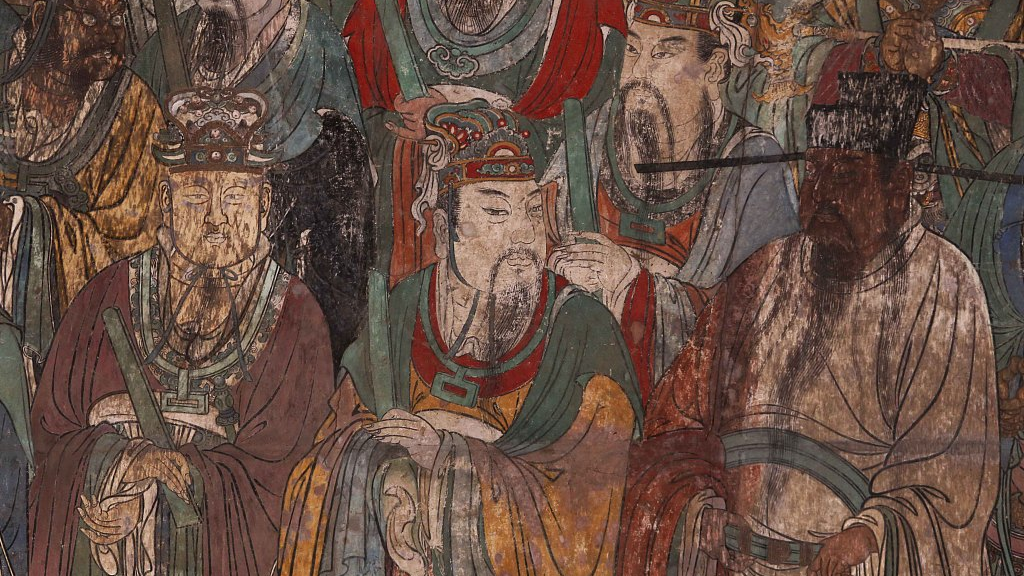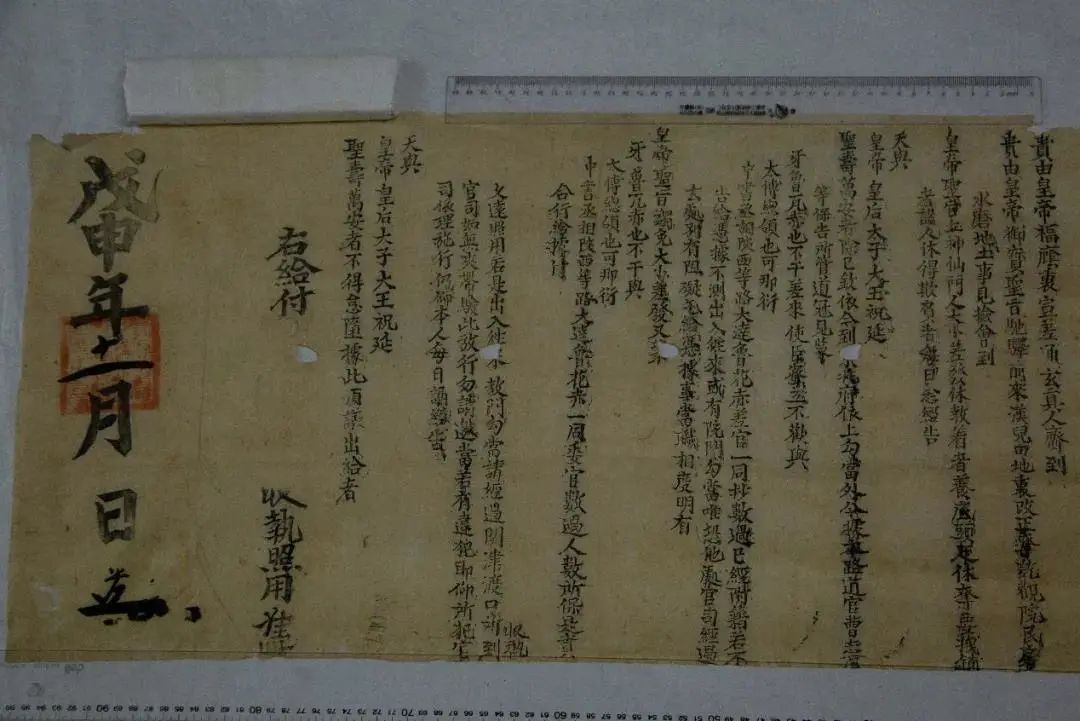
A mural at the Yongle Palace in north China's Shanxi Province. /CFP
A mural at the Yongle Palace in north China's Shanxi Province. /CFP
Five Taoist priest's identification papers and a copy of Taoist scriptures discovered in the iconic Taoist temple Yongle Palace in north China's Shanxi Province have disclosed the secrets of monks living more than 700 years ago.
Three of the identification papers, which were used as travel permits and issued from 1244 to 1248, have similar writing style, starting with citing the imperial edict of approving religious activities, then explaining who was the paper's holder and what he would do, and ending with the signature of a bondsman and issuance organization.
The papers also read the name, age, title and birthplace of the holders and whose their mentors were. They usually had another Taoist priest to be his bondsman. But one of the holders, named Yu Shanqing, was an abbot of a prestigious Taoist temple, and his identification paper was issued directly by the then emperor, which entitled him the all-pass right to travel across the country.

The identification paper of Taoist priest Yu Shanqing issued by the then emperor. /Courtesy of the Yongle Palace
The identification paper of Taoist priest Yu Shanqing issued by the then emperor. /Courtesy of the Yongle Palace
Being of great significance to the temple and the study of the development of the Quanzhen School of Taoism, the papers were accessed by experts as the temple's first grade cultural relics, and have sent for restoration.
They were found in the Yongle Palace among other nearly 100 ancient books and documents in June 2019 when the temple rearranged the books.
The Yongle Palace is one of the three most important temples of the Quanzhen School of Taoism. It has the largest mural of the Yuan Dynasty (1271-1368) in China.